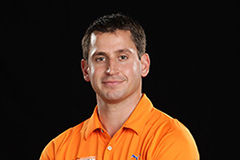
Most of the greatest golfers from history have used some form of mental training for golf, such as visualization and mental imagery, including golf’s all-time leading major champion Jack Nicklaus who said,
“I never hit a shot, not even in practice, without having a very sharp, in-focus picture of it in my head. First I see the ball where I want it to finish, nice and white and sitting up high on the bright green grass. Then the scene quickly changes, and I see the ball going there: its path, trajectory, and shape, even its behavior on landing. Then there is a sort of fade-out, and the next scene shows me making the kind of swing that will turn the previous images into reality.”
Nicklaus affirms that 50% of success in golf is a golfer’s mental picture. This percentage may vary from golfer to golfer, but one thing is for sure – visualization and imagery is a critical component in golf psychology and mental training for golf for a golfer’s performance.
 This is a major reason why all of our junior golfers at the Gary Gilchrist Golf Academy are trained to use visualization and imagery during our mental coaching sessions. Visualization isn’t a mental strategy limited to professionals and top junior golfers. Science has demonstrated that mental imagery is beneficial to all golfers, regardless of age or ability.
This is a major reason why all of our junior golfers at the Gary Gilchrist Golf Academy are trained to use visualization and imagery during our mental coaching sessions. Visualization isn’t a mental strategy limited to professionals and top junior golfers. Science has demonstrated that mental imagery is beneficial to all golfers, regardless of age or ability.
Sport psychology research has found a strong link between performance and the visual pictures golfers use in a new line of exciting research called Functional Equivalence. If this term sounds confusing, don’t worry. The idea behind it is simple! All it means is that the same areas of the brain are activated when imagining a movement as actually making that movement. Meaning, if you were to imagine making a golf swing, many of the same areas within your brain are activated as when actually making the golf swing. In essence, the brain acts the same way when imagining a movement as when actually making the movement.
So why is this important? How can this help you?
Simply put, every time you imagine something, your brain is mentally practicing to make that image come true. This means that your imagination can act as an amazing tool in developing and training your mental game for golf.
Since everything you imagine sends a signal to your brain, it means that, not only are good images sent to your brain, but so are the negative images. So be careful of the images and pictures you choose to focus on.
You must learn to gain control of your imagination and not let your imagination control you. The golfers who are most happy and achieve the most success in golf have learned to master their imagination and send more positive pictures to their brain then negative ones.
Want to work with or ask Dr. Dan a question? Shoot him an email at
[email protected].

